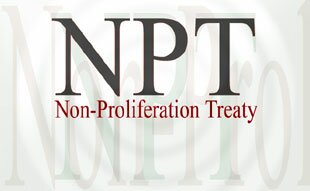|
News | Iran Travels | Iran Professional Services | About | Contact | Discussion Forum | Archive |
|
HAMSAYEH.NET |
| IRAN & INTERNATIONAL NEWS | CONTACT | ABOUT |
|
|
What is NPT All About? | ||
|
|
|||
The Grand Bargain of the NPT and the Rules of the Nuclear Game Today.After you finish reading this chapter of Apocalypse Never, go out and try an experiment. Enter a Starbuck's, or some locally owned alternative, and see if you can chat up 100 people waiting in line. There are always people waiting in line at these places. Tell them that on July 1, 1968, in Washington, London, and Moscow, world leaders signed something called the Treaty on the Non-Proliferation of Nuclear Weapons, commonly known as the "NPT." Then ask them to tell you what it says. In this age of vast civic disengagement, probably around 90 will respond, "I don't know. I never heard of it." Of the remaining ten, probably eight or nine will tell you, "It's about preventing the spread of nuclear weapons. It's about keeping countries like North Korea and Iran from getting The Bomb." Those eight or nine respondents will be half right. In the NPT, the human race endeavored to offer a permanent solution to the great problem of the nuclear age. The grand bargain of the NPT was that the many "nuclear have-nots" agreed forever to forego nuclear weapons, while the few "nuclear haves" agreed to get rid of theirs. No, that is not a misprint. Of your 100 interlocutors, quite likely no more than one or two will know that more than forty years ago, the U.S. government committed itself to eliminate its entire nuclear arsenal. And -- in conjunction with the other nuclear weapon states -- to abolish nuclear weapons from the face of the earth forever. Really. Try the experiment today. The NPT does not just impose non-proliferation obligations on countries like Iran and Syria and Libya. The NPT imposes disarmament obligations on us. Article VI of the Treaty commits the nuclear states "to pursue negotiations in good faith on effective measures relating to a cessation of the nuclear arms race at an early date, and to nuclear disarmament ... under strict and effective international control." Lest anyone assert any ambiguity in those words, one need turn only to the treaty's preamble, which states that the signatories are "desiring to further the easing of international tension and the strengthening of trust between States in order to facilitate the cessation of the manufacture of nuclear weapons, the liquidation of all their existing stockpiles, and the elimination from national arsenals of nuclear weapons ..." It was the first time since the dawn of the age of atomic weapons, nearly a quarter century earlier, that the human race had formally expressed its intent to bring that age eventually to a close. "The NPT is supposed to lead to a nuclear-free world," says Ben Sanders, a member of the Dutch delegation to the 2000 NPT Review Conference. "The non-nuclear countries see it as a bargain which the weapons states have failed to keep." "The NPT does not simply aim to maintain the nuclear status quo," says Ambassador George Bunn, who served on the original U.S. negotiating team in the late 1960s. "Article VI ... requires that the original five nuclear weapon states pursue effective nuclear disarmament measures." "The NPT is based on a core bargain under which all the non-nuclear-armed countries have agreed they would not acquire nuclear weapons," says former President Jimmy Carter. "In exchange, the five nuclear-armed countries have agreed to take good faith disarmament steps, with the eventual goal of the complete, worldwide elimination of nuclear weapons. The Treaty has been remarkably successful on the first part of the bargain, but not so successful on the second." The NPT for Dummies The NPT was signed in 1968 by three nuclear weapon states (the U.S., the USSR, and the United Kingdom), and by 59 non-nuclear weapon states. For various reasons the nuclear weapon states France and China did not sign the treaty until 1992, though they did pledge in 1968 to adhere to its terms and for the most part did so during the ensuing quarter century. The signatories eventually expanded to those five nuclear weapon states, and 183 non-nuclear weapon states. It is the most nearly universal treaty in all of human history, even more so than the United Nations Charter. Only four states remain outside the treaty regime, all of which possess nuclear weapons - India, Pakistan, Israel, and North Korea, which once was a member but withdrew in 2003. (Every party has a right to do that under Article X, which permits withdrawal if a state party concludes that "extraordinary events ... have jeopardized the supreme interests of its country." The next chapter will argue that North Korea could make quite a good argument that for them, during the Bush era, that was indeed the case.) The full bargain of the NPT is actually a bit more complicated than just "we won't get them if you'll get rid of them." One way to grasp the essentials of the treaty is to examine what both sides put forth as their part of the deal. So what do the non-nuclear weapon states give -- or give up? Two things. Two enormous concessions.
The nuclear weapon states pledge several things in return.
|
The NPT was signed in 1968 by three nuclear weapon states (the U.S., the USSR, and the United Kingdom), and by 59 non-nuclear weapon states.
|
||
Disclaimer: Opinions expressed on this site are solely Hamsayeh.Net’s own and do not represent any official institutions’, bodies’, organizations’ etc. Similarly, Hamsayeh.Net
would not be responsible for any other opinions that may be expressed therein by other sources through direct or indirect quotations.


